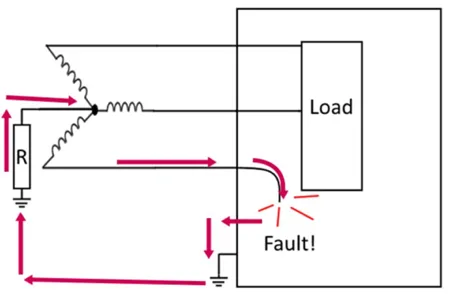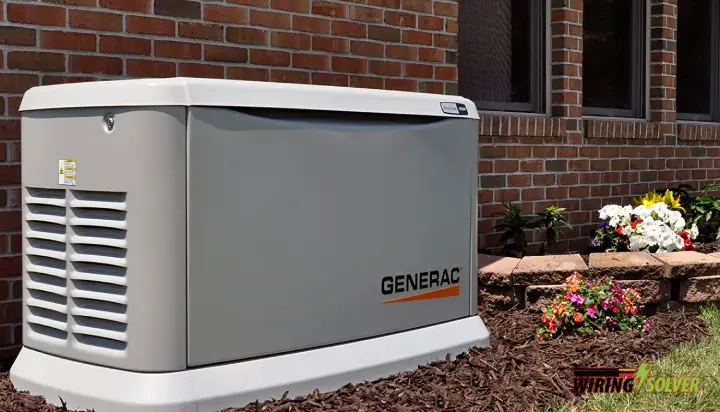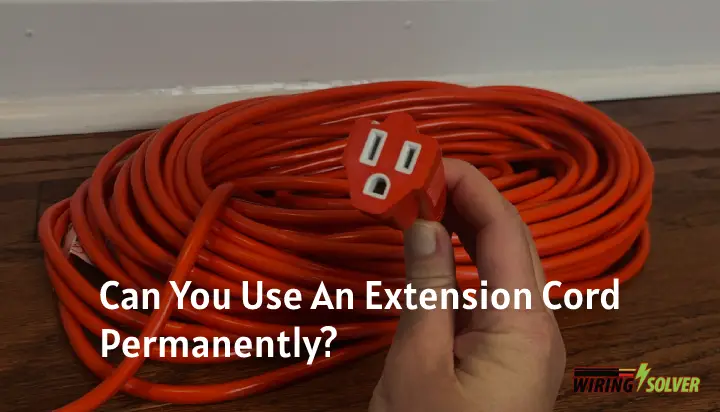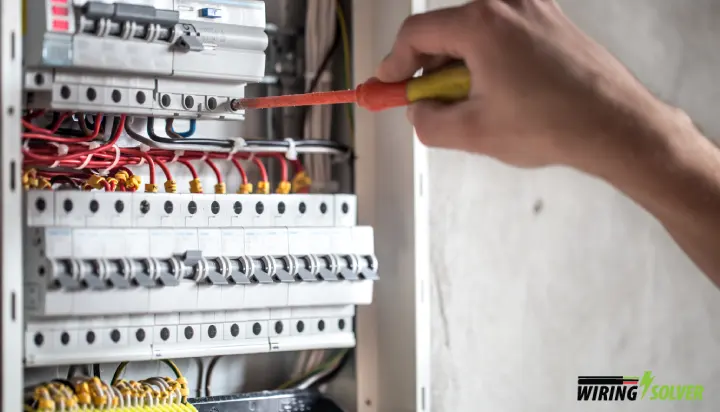When one room does not have power, yet the breaker does not seem to be tripped, you can conclude that there is an issue with your circuitry.
So, what to do when power out in one room breaker not tripped?
The first step is to find the cause of the issue. Such as a circuit breaker failure, short circuits, ground faults, overloads, etc. After you have pinpointed the cause, you can move on to fixing it.
I will further discuss in detail the causes of such an issue as well as provide you with directions on how to fix them.
Causes of Power Outage in One Room when Breaker Isn’t Tripped:
As previously mentioned, the causes can be varied based on the situation. It may be due to a short circuit, an overload, or a ground fault. In this segment, I will go over them in detail.
Circuit Breaker Failure:
A common cause for such an issue could be the failure of a circuit breaker. Power not working in certain rooms may indicate a circuit breaker failure, as it is possible for a circuit breaker to fail without tripping.
It serves as a warning that it needs to be changed. The switch itself may be physically locked in the “on” position, making the issue mechanical. Finding the precise problem may be difficult. And if you find any difficulty in doing so, make sure to get a proper diagnosis from a professional.
Short Circuit:
A short circuit can also be a cause of a power outage in a specific room of your house. If there is a short circuit within the circuit of that room, electricity cannot reach the outlets and fixtures.
Rather it takes a short path back to the source. Hence the power goes out in that specific room or specific circuit.
Circuit Overload:
Another cause for such a power outage can be an overloaded circuit. If you plug in too many high-power demanding appliances, such as ovens, heaters, air conditioners, etc., it may cause the circuit to be overloaded.
Which in turn could prohibit sufficient power from being supplied to the circuit. Resulting in a power outage. So, in case of electricity not working in one room, make sure not to overload the circuit.
Ground Faults/GFCI Failures:

Our rooms often have GFCI outlets installed to protect the circuit from ground faults. It has an internal switch built into it that shuts off the room’s electric current flow if it detects a ground fault (Fig 1).
Sometimes they are placed in such a manner within the circuit that other outlets on that circuit might be dependent on it. So, if the GFCI outlet trips, it causes the electricity to stop flowing. Worry not, troubleshooting a GFCI is not a hard task.
How Can I Fix These Problems?
The previously mentioned issues may be the culprit for causing a power outage in one specific room. They need to be fixed as soon as possible. I will list the most common fixes for them below.
Circuit Breaker Failure:
Sometimes a circuit breaker has a minor hiccup which can be easily fixed by resetting the breaker. Which is a pretty simple task.
How to reset a circuit breaker?
- Open the main circuit panel of your household.
- Locate the malfunctioning breaker.
- Turn the breaker off.
- Make sure that the power has been turned off using a non-contact voltage tester.
- Wait for a few seconds then turn the breaker back on.
If it was just a minor malfunction, the power in your room should be back on now. But you may need to replace the breaker if you see signs of failure.
Signs of Circuit Breaker Failure:
- The circuit breaker seems to trip frequently.
- The circuit breaker heats up during use.
- There are burned or scorched marks on the body of the circuit breaker.
- A burning smell is emitted from the breaker.
- The breaker does not supply power even when it is turned on.
If you find that your breaker is showing any of these signs it is highly advised to replace it as quickly as possible.
Short Circuit:
Short circuits can be caused by several factors. Let’s take a look.
Causes for the short circuit:
- Cheap wires.
- Bad or faulty wiring.
- Circuit overloading.
- Vermin or pests chewing through wires.
- Water leakage.
Short circuits are very dangerous and need to be fixed without any delay.
Fixing a short circuit:
- Turn the power off from your main panel.
- Locate the short circuit.
- Remove the damaged wiring.
- Attach new wires of better quality.
- Be sure to make the connections secure.
Circuit Overload:
Circuit overloading is a common mistake most of us tend to do without proper knowledge of the fact. Here are some signs that you have an overloaded circuit.
Signs of circuit overloading:
- Power goes out in one specific circuit.
- The appliances connected to the circuit do not seem to work properly or work at all.
- The outlets and fixtures tend to be warm to the touch.
- A burning smell may be present in some cases.
If you find any of these signs present in your household circuits, you have to immediately address the issue by removing the load on the specific circuit.
Fixing circuit overloads:
- Turn off any appliance if you are not using it.
- Do not use appliances with high power consumption on the same circuit.
- If any outlet has been damaged due to a circuit overload, make sure to replace it.
Ground Faults/GFCI Failures:
There’s a possibility that a GFCI outlet has stopped the flow of electricity into your room to address the ground fault by maintaining the circuit.
Troubleshooting a ground fault:
- Check whether the GFCI has tripped or not.
- If it has tripped, reset the GFCI.
- If the power comes back on and is sustained, there is no reason for concern.
- But if the GFCI keeps tripping, there might be a deeper issue.
- If replacing the GFCI does not help, consult a professional for a more thorough examination of your circuits.
Summary
I hope this article has solved your issue regarding the power out in one room breaker not tripped. Throughout this article, I have mentioned some of the most common causes that might result in such a malfunction.
I have also briefed you about how you might address most of these issues to fix the problem. But be cautious before taking on any electrical endeavors. As small mistakes may prove to be life-threatening.




![Parallel VS Series Circuit [Difference and Comparison]](https://wiringsolver.com/wp-content/uploads/2022/03/Differences-Between-Parallel-and-Series-Circuits.jpeg)

